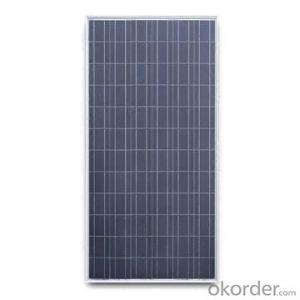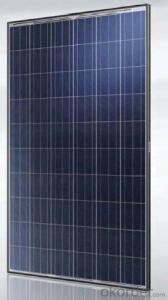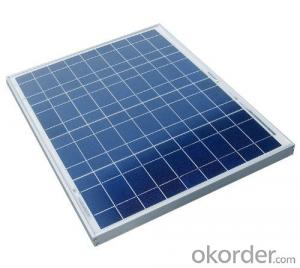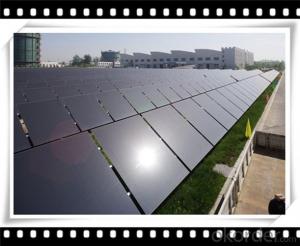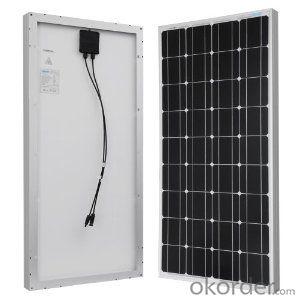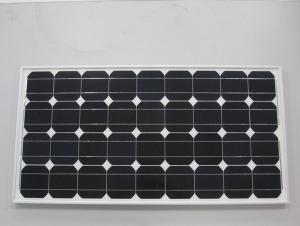65W Poly Solar Panel for Cabin - Small Solar Panel Factory Direct Sale CNBM
- Loading Port:
- Qingdao
- Payment Terms:
- TT OR LC
- Min Order Qty:
- 10 set
- Supply Capability:
- 300000 set/month
OKorder Service Pledge
OKorder Financial Service
You Might Also Like
Polycrystalline Solar Modules
CNBM offers a range of small, medium and large polycrystalline solar modules, designed for a range of requirements.
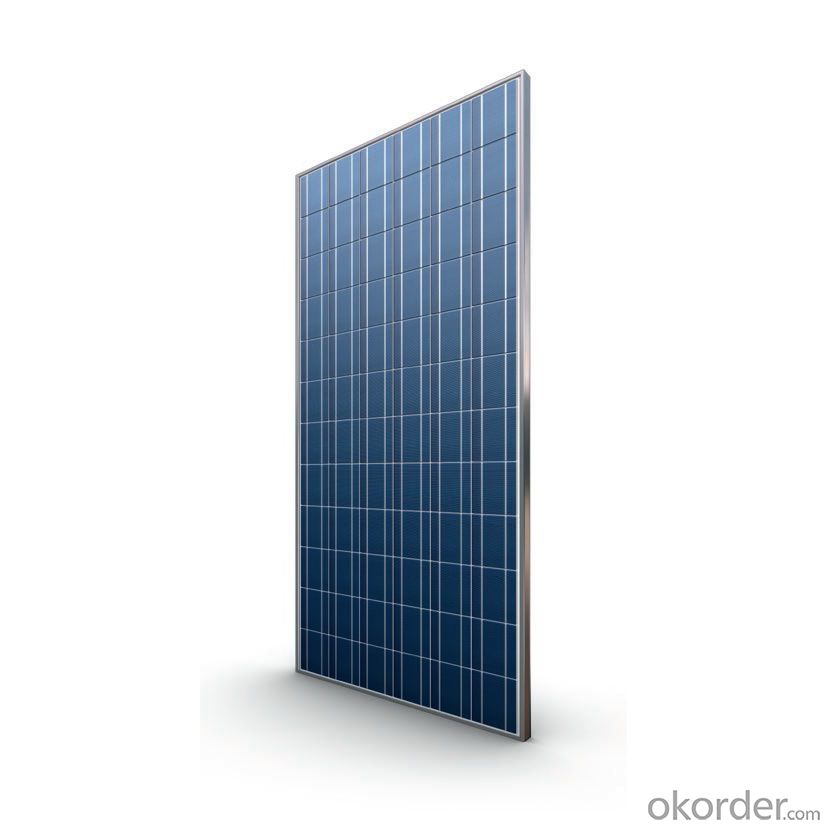
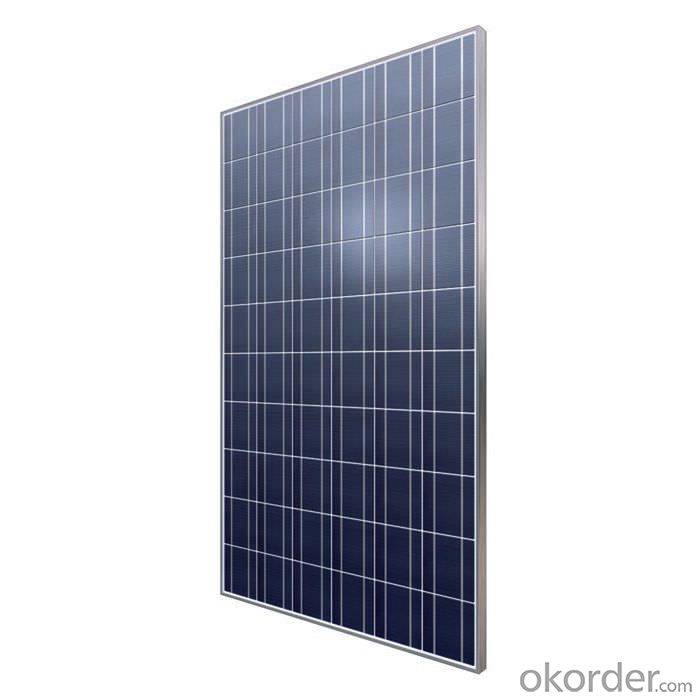
Specifications:
Tolerance | +/-3% |
Cell | Polycrystalline silicon solar cells (156 x 156mm) |
N0. of Cells | 60 (10 x 6) |
Dimension of Modules (mm) | 1650 x 990 x 40 |
Weight (kg) | 25.5 |
Limits:
Operating Temperature | -40~+85? |
Storage Temperature | -40~+85? |
Maximum System Voltage | 1000 VDC max. |
Hail Impact | Diameter of 28mm with impact speed |
Temperature and Coefficients:
NOCT | 48C+/-2? |
Voltage temperature coefficient (%/K) | -0.35 |
Current temperature coefficient (%/K) | 0.05 |
Power temperature coefficient (%/K) | -0.45 |
Characteristics:
Model: | SGM-200P | SGM-210P | SGM-220P |
Max-power voltage Vmp (V) | 29.2 | 29.4 | 29.41 |
Max-power current Imp (A) | 6.85 | 7.14 | 7.48 |
Open-circuit voltage Voc (V) | 36.5 | 36.69 | 36.9 |
Short-Circuit Current Isc (A) | 7.28 | 7.6 | 7.93 |
Max-power Pm(W) | 200 | 210 | 220 |
Model: | SGM-230P |
Max-power voltage Vmp (V) | 29.8 |
Max-power current Imp (A) | 7.72 |
Open-circuit voltage Voc (V) | 37.31 |
Short-Circuit Current Isc (A) | 8.19 |
Max-power Pm(W) | 230 |
STC: Irradiance 1000W/m2, module temperature 25?, AM-=1.5
Poly Crystalline Solar Panels Specifications Range
Maximum Power (Pm) | Dimension | Weight | Operating Voltage (Vmp) | Operating Current (Imp) | Open Circuit Voltage (Voc) | Short Circuit Current (Isc) |
0.45W | 140x80x10mm | 0.08kg | 3.3V | 150mA | 4.6V | 160mA |
1.0W | 162x140x10mm | 0.16kg | 7.5V | 150mA | 10.3V | 160mA |
4.5W | 269x251x23mm | 0.8kg | 16.5V | 0.27A | 20.5V | 0.3A |
10W | 420.1×268.9×22.6mm | 1.92kg | 17.5V | 0.58A | 20.5V | 0.6A |
20W | 425x502x50mm | 3.0kg | 16.8V | 1.19A | 21.0V | 1.29A |
30W | 593x502x22.6mm | 3.9kg | 16.8V | 1.78A | 21.0V | 1.94A |
40W | 655x537x50mm | 5.75kg | 17.3V | 2.31A | 22.1V | 2.54A |
50W | 839x537x50mm | 6.0kg | 17.5V | 2.9A | 21.8V | 3.17A |
65W | 1111x502x50mm | 7.2kg | 17.6V | 3.69A | 22.1V | 3.99A |
80W | 1204x537x50mm | 7.7kg | 17.6V | 4.55A | 22.1V | 4.8A |
- Q: Well I was thinking about the idea of renovating either a smaller school bus or building a tiny house and I was wondering if i can get some information on the size and watts panel should I use or more like how to get that whole solar energy in motion. Any infor and links would help
- I think that typical solar panels are 2'x4' and produce something like 800-000 wh per day. (That's 0.8 - kwh per day.) More in the summer, less in the winter, if they're aimed sort of at the sun. There are newer, more expensive panels that produce more. There are also thin film panels that are less expensive, and probably more sturdy. You then have a couple choices. In a house, you'd have an expensive inverter to connect to the utility power, so you can have power at night when your panels aren't generating anything. In a trailer, you want 2-4-6 deep cycle car batteries to store the power. Then you could have an inverter to convert that power to 20v AC, so you could use normal appliances. Or, you could buy appliances that run on 2 volts DC. Maybe a combination of both. You'll need to figure out how much power you're going to use, so you know how many panels and batteries you're going to need. The calculation is easy. Figuring out how much power you need is hard. You need deep cycle batteries because you can repeatedly charge them way up and run them way down. Ordinary batteries die fairly quickly when you do that.
- Q: I am researching several solar panels to install in my house. I would like to use a 40 watt panel to connect, through a solar battery controller, to a battery or two. I would then like to use the solar panel (40 watts) to charge the battery(ies) for emergency use. Once charged, and when needed, I would like to use the battery(ies), 2 volt deep cycle, to power several LED lamps. Since I am new to solar power I had several questions...Is a 40 watt panel strong/large enough to charge a 2 volt deep cycle battery or two?How long would it take to charge one of these batteries?What would be the expected cost to purchase necessary supplies? (With the solar panel, battery controller, and MC4 cabling I've found I have an expected cost of roughly $00.00 with batteries)Would this be difficult for someone with little experience in this field?
- Your demand is high. You require at least 5KVA (5000watts) out put with an appropriate battery storage and inverter..
- Q: What is the impact of roof orientation on solar panels' performance?
- The impact of roof orientation on solar panels' performance is significant. The orientation of the roof, specifically its tilt and direction, determines the amount of sunlight the panels receive throughout the day. Ideally, solar panels should face south and have a tilt angle equal to the latitude of the location for optimal performance. Deviations from this ideal orientation can result in reduced energy production. East-facing panels produce more electricity in the morning, while west-facing panels generate more in the afternoon. North-facing panels have the lowest performance as they receive the least amount of direct sunlight. Therefore, correct roof orientation is crucial to maximize the efficiency and output of solar panels.
- Q: Can solar panels be installed on a shopping mall or retail center?
- Yes, solar panels can be installed on a shopping mall or retail center. Many commercial buildings, including shopping malls and retail centers, have ample roof space that can be utilized for solar panel installations. Installing solar panels on these buildings can help offset energy costs, reduce carbon emissions, and provide a renewable energy source. Additionally, it can also serve as a visible demonstration of the business's commitment to sustainability and environmental responsibility.
- Q: I want to make 2V 4.5A solar panel to charge my battery used in my RC car project. I just like to know how should I amplify the current for 4.5A. I need the total circuit diagram. Can anyone help me. Please. I need some affordable methods please.
- The simplest way to use these panels is simply to connect the panel to your battery, with a diode in series to prevent the battery from discharging through the panel (no sunlight condition). Just connect the battery for the required charge time then disconnect it. Full sun is required, no shadows on the solar panel! ---------- .
- Q: Can solar panels be used to power a train?
- Yes, solar panels can be used to power a train. Solar panels can convert sunlight into electricity, which can then be used to power various electrical systems on a train, including propulsion. However, the feasibility and effectiveness of using solar panels to power a train depend on factors such as the size and efficiency of the solar panels, train energy requirements, and the availability of sunlight.
- Q: What are the supplies needed in a solar panel field, i know there are the panels. But what about batteries, and converters. Possibly other things, and how many will i need, for a certain amount of panels?
- I am interested also and plan on following up on the information in the next couple of weeks
- Q: What is the role of inverters in solar panel systems?
- The role of inverters in solar panel systems is to convert the direct current (DC) electricity produced by the solar panels into alternating current (AC) electricity, which is the type of electricity used in homes and businesses. Inverters also ensure that the AC electricity produced is synchronized with the grid, allowing for efficient utilization or storage of energy, and enabling solar panel systems to feed excess electricity back into the grid.
- Q: Can solar panels be installed on remote monitoring systems?
- Yes, solar panels can be installed on remote monitoring systems. Solar panels provide a reliable and sustainable source of energy for remote monitoring systems, allowing them to operate autonomously and continuously in remote locations without the need for grid power or frequent battery replacements.
- Q: how would you build a solar panel
- As a sandwich. Glass Space /4 inch Glass Space with copper radiator painted flat black. Box made of wood. with the inside painted black. Insulate the back side. Use water with RV antifreese. Circulate water through with a small pump. Face it toward the sun. Thermal water solar Panel.
Send your message to us
65W Poly Solar Panel for Cabin - Small Solar Panel Factory Direct Sale CNBM
- Loading Port:
- Qingdao
- Payment Terms:
- TT OR LC
- Min Order Qty:
- 10 set
- Supply Capability:
- 300000 set/month
OKorder Service Pledge
OKorder Financial Service
Similar products
Hot products
Hot Searches
Related keywords
